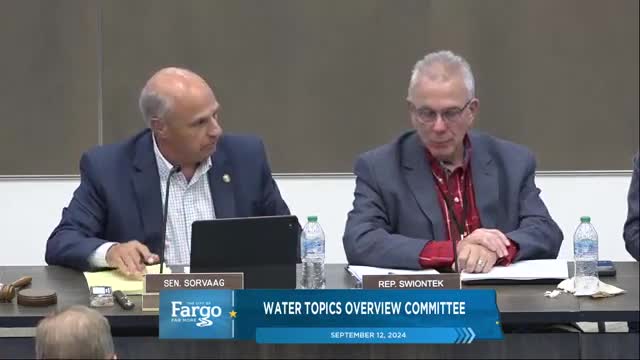Eminent domain battle shapes future of critical drainage project
September 12, 2024 | Fargo , Cass County, North Dakota
This article was created by AI summarizing key points discussed. AI makes mistakes, so for full details and context, please refer to the video of the full meeting. Please report any errors so we can fix them. Report an error »

In a recent government meeting, officials discussed the implications of a 2019 Supreme Court ruling on the ongoing Drain 11 project, which involves significant improvements to a century-old drainage system. Chris McShane, litigation counsel for the project, outlined the legal framework surrounding eminent domain, emphasizing the necessity of adhering to statutory processes when acquiring land for public projects.
The meeting highlighted the challenges faced by the Sargent County Water Resource District in moving forward with the project, particularly after landowners contested the resolution of necessity that allowed the project to proceed. The North Dakota Supreme Court upheld the district court's decision, affirming that the landowners had not followed the proper administrative appeal process to challenge the project.
McShane explained that while most landowners voluntarily agreed to convey property rights, three groups did not, prompting the use of eminent domain. The court ultimately ruled that the project was necessary and proper, but emphasized the importance of following funding protocols. The Supreme Court clarified that state cost-share funds could be utilized as a starting point for financing, but must be accounted for in the maintenance levy obligations.
The project, initially planned to span 11 miles, was scaled back to 4.4 miles due to budget constraints. Despite this reduction, the improvements made have been deemed successful, enhancing safety and efficiency for both agricultural and public infrastructure. The meeting concluded with a focus on the benefits of the completed work, which has significantly improved drainage and reduced flooding risks in the area.
The meeting highlighted the challenges faced by the Sargent County Water Resource District in moving forward with the project, particularly after landowners contested the resolution of necessity that allowed the project to proceed. The North Dakota Supreme Court upheld the district court's decision, affirming that the landowners had not followed the proper administrative appeal process to challenge the project.
McShane explained that while most landowners voluntarily agreed to convey property rights, three groups did not, prompting the use of eminent domain. The court ultimately ruled that the project was necessary and proper, but emphasized the importance of following funding protocols. The Supreme Court clarified that state cost-share funds could be utilized as a starting point for financing, but must be accounted for in the maintenance levy obligations.
The project, initially planned to span 11 miles, was scaled back to 4.4 miles due to budget constraints. Despite this reduction, the improvements made have been deemed successful, enhancing safety and efficiency for both agricultural and public infrastructure. The meeting concluded with a focus on the benefits of the completed work, which has significantly improved drainage and reduced flooding risks in the area.
View full meeting
This article is based on a recent meeting—watch the full video and explore the complete transcript for deeper insights into the discussion.
View full meeting
